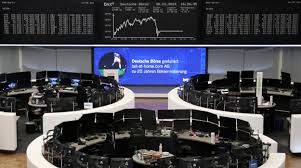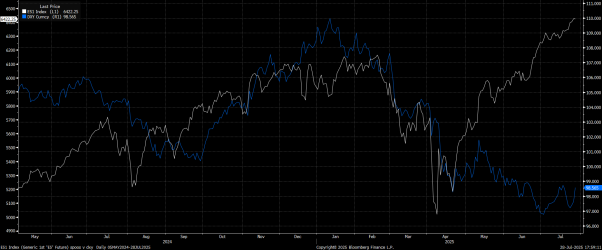S&P 500 Caught Between Fed Easing Expectations, Slowing Growth Risks

Linh Tran
The S&P 500 is currently caught between expectations of monetary easing by the Federal Reserve (Fed) and risks stemming from slowing growth. This has led to more cautious trading until clearer signals emerge.
In yesterday’s session, the standout was Google (Alphabet), whose stock surged 9.14% after a U.S. court issued a favorable ruling, sparing the company from being forced to break up key business segments. This eased investor concerns over legal risks and reinforced confidence in the stability of Google’s search-related revenue streams. Meanwhile, Tesla rose 3.81%, supported by expectations that demand for electric vehicles will recover as financing costs decline and clean energy incentives remain in place. Apple also contributed positively, gaining 1.44%, benefiting from prospects of continued partnership with Google to keep its search engine as the default option on iPhones.
The sharp rally in mega-cap tech stocks provided strong support to Wall Street’s major indices, helping them rebound despite mixed macroeconomic signals.
U.S. economic data released this week highlighted a clear divergence. The ISM Manufacturing PMI remained below 50, indicating that the manufacturing sector is still contracting under weak demand. In contrast, the ISM Manufacturing Prices index came in higher than expected, signaling persistent input cost pressures. This mix has made the Fed’s policy outlook more complex and harder to predict.
Real yields remain the decisive variable in September. Each time U.S. data points to moderate cooling, expectations for Fed rate cuts rise, directly supporting equity markets. This explains why the S&P 500 reacts strongly to labor market, inflation, and wage growth reports. Conversely, if data comes in stronger than forecast, the “higher-for-longer” narrative could resurface, pushing yields higher and putting pressure on the index.
The S&P 500’s valuation is elevated relative to historical levels, partly reflecting expectations of imminent Fed rate cuts and optimism surrounding growth from artificial intelligence investments. While declining real yields mean that a high P/E ratio is not necessarily an immediate barrier, the relatively thin equity risk premium (ERP) leaves the market more vulnerable to data shocks. This implies that investors’ margin of safety is narrowing, and any negative surprise could trigger outsized reactions.
At present, the medium-term outlook for the S&P 500 still leans toward an upward trend, provided the Fed moves closer to an easing cycle and real yields continue to decline. That said, the market is unlikely to rise in a straight line. Corrections are entirely possible, particularly as investors await the upcoming Non-Farm Payrolls (NFP) report due on Friday.
Tran is Market Analyst at XS.com






